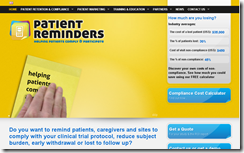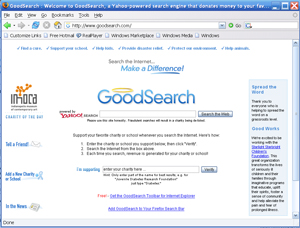In this post I would like to lay out my arguments for engaging in non traditional marketing channels, I’ll discuss the channels available, the content type on each channel and the measurement of results. I would appreciate any discussion about this article and indeed what you think about the concepts I have raised.
WHY?
We have moved into the 21st Century, the truth of that statement is easy to see around us every day. Our attitudes and habits as a society are changing, particularly the channels of communication that we use. More and more communication is undertaken over social web channels, we build online communities that increase our social connections beyond family and friends to friends of friends and even strangers. I think that the explosion of this type of engagement is a combination of our need to relate to our friend and family members who are removed from us by distance and also a reaction to the lost sense of community that appears to prevail in our society.
The web, either as a search or communication tool has become the go to place. Whilst initially this phenomenon was driven by tech people and the young, it has become accepted throughout society in nearly every demographic. As I grew up, if I wanted to search for a business that provided a particular service I picked up the Golden Pages. Something that admittedly a lot of our customers still seem to do. However, I can not remember the last time that I looked at the Golden Pages and my children do not even know what it is. I had this hilarious conversation just a week ago with my seventeen year old son, after trying to explain the concept I told him it was Google before the dinosaurs died! Nothing like kids to make you feel old.
As I have said, some of our demographic still use the Golden pages but they are more and more turning to the web and the ubiquitous Google to supply their needed information. Not only are they using search engines but more and more of them are using social networks to communicate and become involved in community and shared interests. Don’t forget, our customers are getting younger, because of better education and increased lifestyle expectations, people are searching out treatment for their hearing loss earlier and earlier at a much younger age.
Your Motivation
So, what does this have to do with you, an audiological practice owner who is trying to undertake targeted marketing that can give you adequate ROI? Marketing to our demographic is not JUST about newspapers and magazines anymore, nor though is it Just about social media. I have heard it said that traditional marketing is dead and online marketing is where its at, but I don’t think that is truly the case. However, I think that we as an industry have to become smarter and more adept about targeted marketing across all channels both new and traditional.
I think that it should be a collaborative approach using the best media for your business both traditional and new, I also think that both of these should and can be mixed and combined across campaigns. I think that this synergy can increase your exposure, engagement and supply a constant flow of business to your practice. In effect it can reduce cost per lead over time allowing you to better cope with the pressure on margins that are to the forefront of everybody’s mind at present.
So where does social media fit in our industry’s marketing mix?
The Channels
First lets have a look at the channels that exist right now. Three of the main channels that are being used by other industries and indeed some members of our own industry are Facebook, Twitter and blogs. So, how will you use these channels to a commercial advantage? Each channel is different, the goals and usage tend to be quite different across the channels.
 Facebook: The management of a Facebook Page tends to be a mix of content curation, finding and posting links to information that you judge may be of interest to your target audience, and content manufacture, the manufacture of good content that you deem will be of interest to your audience and will show your professionalism and expertise.
Facebook: The management of a Facebook Page tends to be a mix of content curation, finding and posting links to information that you judge may be of interest to your target audience, and content manufacture, the manufacture of good content that you deem will be of interest to your audience and will show your professionalism and expertise.
 Twitter: Twitter is much more about content curation and some sharing of links to your own content. The following that you build up on Twitter will expect more engagement and will probably engage with you more.
Twitter: Twitter is much more about content curation and some sharing of links to your own content. The following that you build up on Twitter will expect more engagement and will probably engage with you more.
 A Blog: A blog is where you can shine, it is all about content manufacture, its where you supply content that shows your professionalism and dedication to your subject and your Patient. It is where you provide good quality articles on your subject giving clear advice and discussing the latest developments.
A Blog: A blog is where you can shine, it is all about content manufacture, its where you supply content that shows your professionalism and dedication to your subject and your Patient. It is where you provide good quality articles on your subject giving clear advice and discussing the latest developments.
Channel Strategies
On Facebook, the first thing to do is to set up a business page, the content strategy for this page is to position it more towards an advisory platform and less as a promotional channel. In order to do this, you can mix and match content of interest from third party pages such as hearing aid manufacturers and hard of hearing associations around the world. In fact this approach actually will leverage those pages to your advantage by allowing your page to be visible in the stream of the third party pages, possibly giving you the opportunity to connect to some of their followers. They obviously have an interest or else they would not be followers of these third party pages.
The content does not have to be strictly hearing related, a lot of our demographic are interested in gardening. Promoting gardening tips as part of your strategy may lead to engagement with people you may have not reached before. The posting of local information on your page is also ideal. As is liking local club pages and re-posting their content. These are an excellent source of both content and possible new followers.
Facebook adverts as a medium is highly targeted and not nearly as costly as you may think. The benefits over traditional marketing is that it is live, vibrant and you have complete control over who it is delivered to. You can target the adverts by age, interests and even geographic areas. So in other words, I could place an advert saying just how brilliant I am, and you of course would agree, stop heckling at the back, then I could target that to every Facebook member over 55 in Dublin. I guarantee that I would be getting handbag smacks and gobshite remarks by tomorrow morning. How cool is that? the targeting, not the outcome, even my skin could not take the full Dublin wit for long.
Twitter is a different type of platform, Twitter is used to deliver links to content, be it yours or others that you think is fascinating. You post those links in the hope that your followers will find them fascinating and will engage with you in a deeper way. Its kind of like when you were five and found a ten inch worm in the garden. You just had to show it to everybody, Twitter is a bit like that.
Twitter is really important for learning from others, passing on useful information and listening in. The last one is probably the most important, Twitter can be effectively used to listen in to conversations pertaining to products you supply and your brand in a local and targeted way through its search facility. Even though Twitter is limited to 140 character posts and messages, I can truly say I find it the most engaging of platforms.
Your Twitter strategy should be to tweet links of interesting content with your own observations intermingled with links to your Facebook page and blog content. You should engage with your followers, thanking them for their follow and any retweets of your posts they undertake. This engagement will build into a community of sorts over a period of time.
Blogging: As I have said earlier, a blog is where you get to shine, where you get to show everybody how professional and caring you are. In order to do this you need to give direct, honest and undiluted advice. Write in your own voice being true to your own thoughts, if you do not, your content will be stilted and your viewers will see through you.
You should also invite credible comment on the posts that you place on your blog. Again ensure that you answer as directly, honestly and as openly as possible. Your blog is not a news section, although it is okay to repost content that you find really interesting once you reference it and discuss why you find it interesting.
So before you move forward rushing into the abyss, sit down and outline your strategy for the elements of your online media and the content that you will provide. Think carefully about these questions,
What are your key areas of expertise? Are they different in any way than others?
What can you tell your customers that others can’t? What is your unique selling point?
Can you better inform customers about hearing loss? If so, How?
Where will you draw information from for your content? Other users, Traditional media? Manufacturers?
How will you manage your social media channels? What technology will you use to make it easier?
Who exactly in your organisation will manage it?
When a disgruntled customer posts a comment that is nightmarish for your brand, How are you going to deal with it?
If somebody complains on one of your channels, How will you deal with that?
Hey, I didn’t say this stuff was easy, just looking at the last few questions it becomes obvious that social media channels are something that you need to outline a strategy for and not one that fits on the back of a cigarette packet. Having said that, it is worth it, it is fun, it is exhilarating, it helps you to engage with your customers and potential customers for freeeeeeeeeeee! Knew that would get your attention, Running the social media channels for my company has been a wild ride, me on one side Facebooking, Tweeting and Blogging away while my bosses crouched semi terrified in the corner! Mwahhahhahhahahahahahahahah! Sorry some times the post stress just takes over.
In strict fairness, they have allowed me to undertake the experiment without beating me over the head or having me whacked, although I think I was close at least once or twice. The experiment so far, although only in my own opinion, has been a success, I have engaged with people worldwide, I have introduced new customers to our brand. Several people around the world now are customers of my company because of their engagement with us on the web. I have faced most of the questions I mentioned earlier, I had not thought of them before, so when they happened I faced what Pilots call, “Pucker Factor”.
I have to admit that how I dealt with it was on the fly, wing and a prayer stuff. My comments, answers, advice and help offers were just right to deal with the stuff that came up. I would not recommend that course of action to you though, THINK very carefully about every angle before you set off on your journey.
Return On Investment and Metricing
In order to metric your activities, you need to set KPIs. The KPIs around your social media are quite personal, there are many you can set and they reflect what exactly you want to gain from your campaign. Whichever metrics you choose, you should apply them quarterly initially and then monthly as your channels begin to grow. KPIs that I measure are new contacts made, quality of contacts, engagement with contacts. I also analyse ongoing hits on the blog and web activity around my online presence. The tools that allow you do this are either free or cheap, I use one for Twitter called Socialbro which is free right now, it is an outstanding piece of software. I am sure that most of you are already using Google analytics for your website, it can easily be used on your blog to give you excellent in depth data on the activity around you blog.
Pleas feel free to ask questions, giggle hilariously, disagree, oh and tell me I am a god and offer me money! That last one probably ain’t going to happen, but hey, we can live in hope!
![]() Set questions for your patients to answer during their trial period. Ask whatever you want: How did your hearing aids make you feel today? Can you hear people behind you? Which are clearer, male or female voices?
Set questions for your patients to answer during their trial period. Ask whatever you want: How did your hearing aids make you feel today? Can you hear people behind you? Which are clearer, male or female voices?![]()
![]()
![]()
![]()
![]()











 Imperia for defrauding more than 14,000 investors worldwide.
Imperia for defrauding more than 14,000 investors worldwide.
 communicate with each other instantly and constantly, just like two ears do. And children can truly enjoy the benefits of natural sound.
communicate with each other instantly and constantly, just like two ears do. And children can truly enjoy the benefits of natural sound.

 these a lot) to your existing customers.
these a lot) to your existing customers. 










